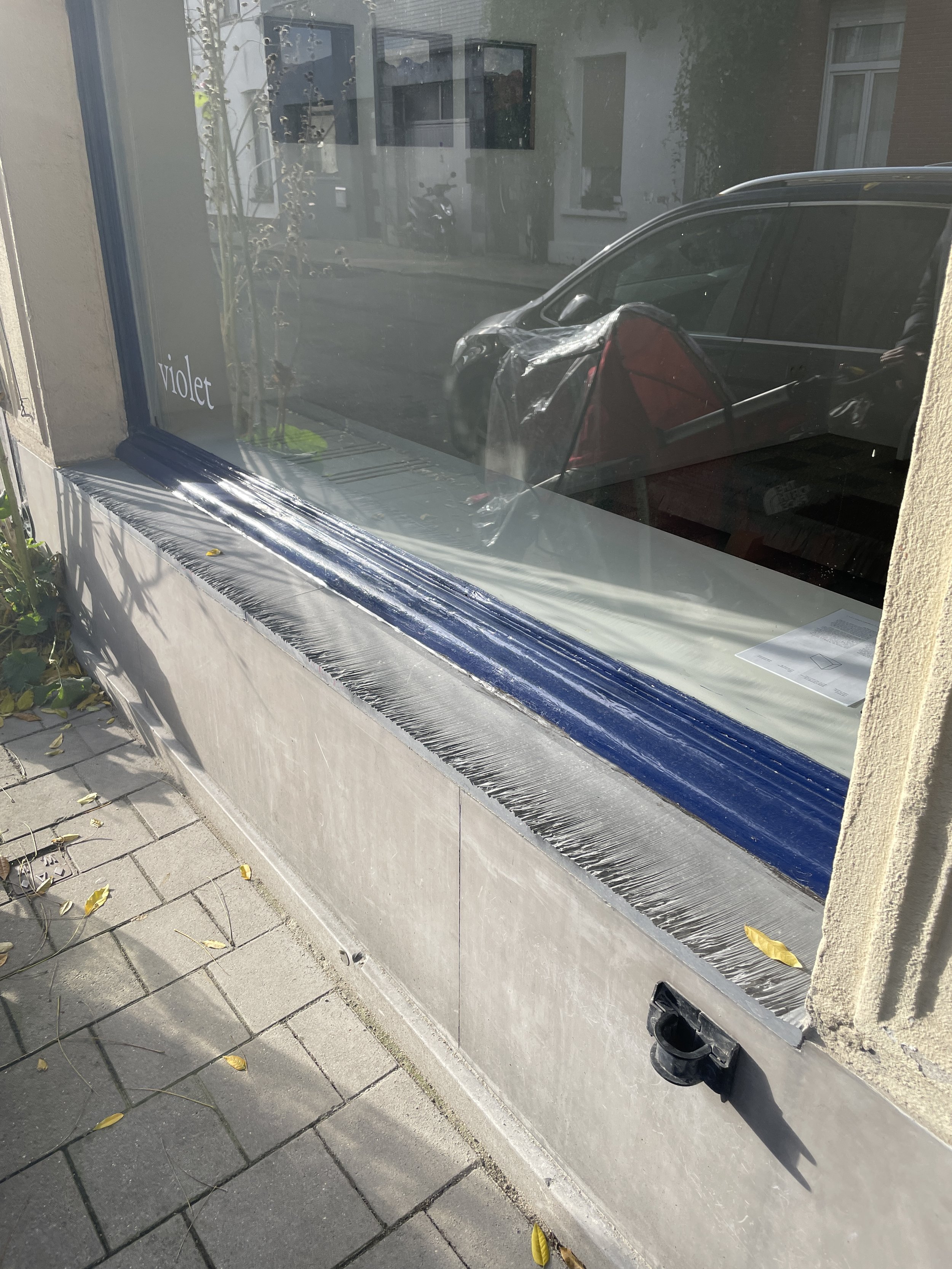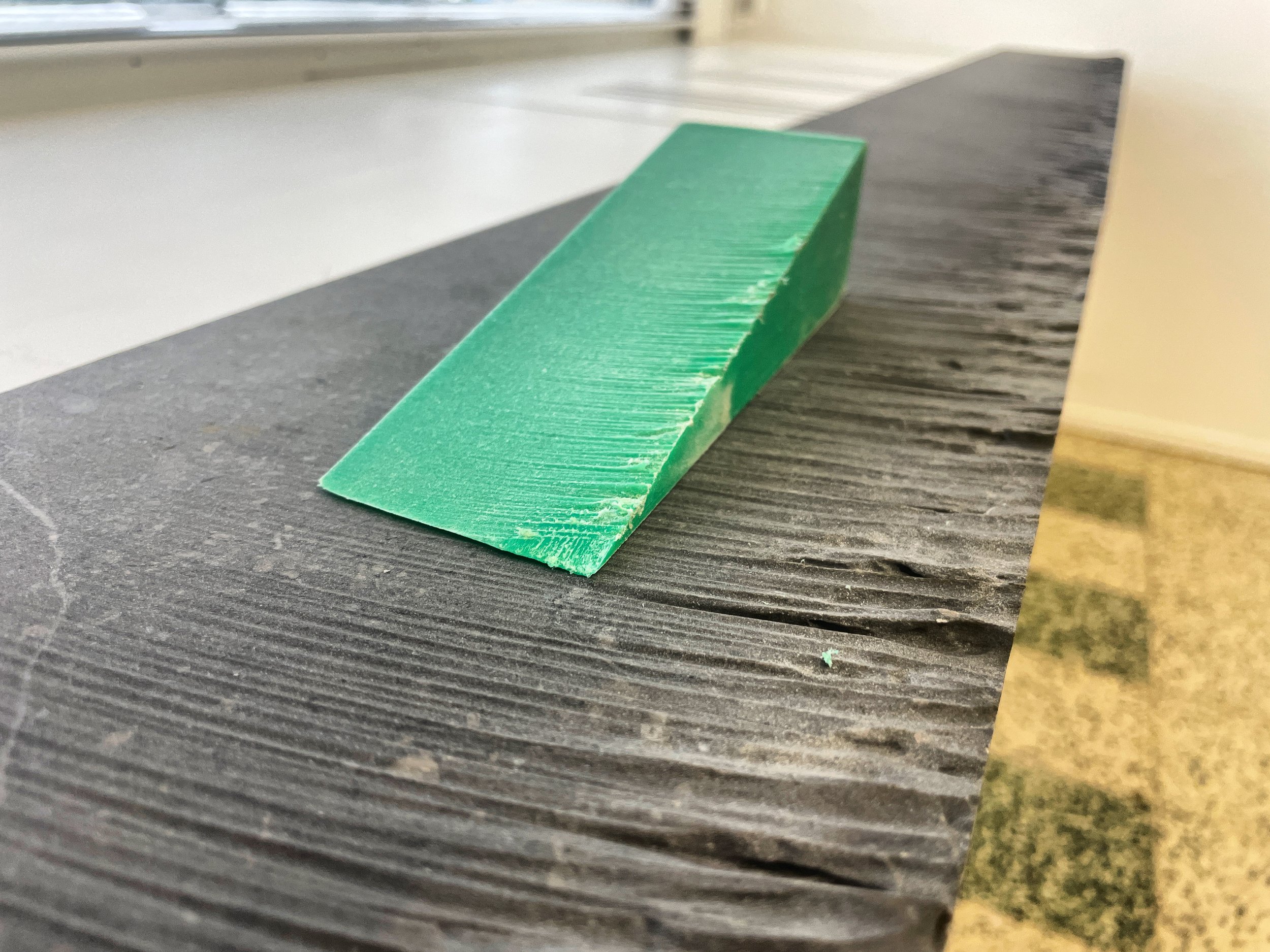
Wasser und Sand: Eugene Joorsstraat
Permanent site-specific work, installed for the occasion of the exhibition ‘The Wedge’ (10th of November - 22nd of December 2023) at Violet (Eugene Joorsstraat 22, 2140 Antwerpen).
Bluestone, waterjet cut
2,5m x 0,18m
Text on the exhibition ‘The Wedge’:
Defined as one of six simple machines, the wedge can be seen as a building block of which all complex machines are composed. It can plug, level or splice. It can lift, cut or hold an object in place. Not only does the wedge represent the most elementary aspects of all human technologies, it also embodies the connection between the natural and the cultural. An essential shape that occurs spontaneously in nature— as rocks, ice, roots or grains of sand as they erode the landscape — has been abstracted by the human gaze over time. It is put to use, streamlined, industrialized. But even in the most precise of environments, the wedge can symbolize the primordial, intuitive side of technology, holding open the doors that would otherwise automatically close, setting a standardized table straight on the cobblestones, preventing a truck from rolling down an unpredictable hill: the simple machine that might as well be a rock.
Lodewijk Heylen approaches the theme of The Wedge as a study in industrial processes and materials. Mainly focussing on the capacities of the waterjet cutting machine, which uses an extremely precise high-pressure water and sand stream to quickly erode its way through any material it encounters, Heylen visualizes the conceptual similarities between complex manufacturing technologies and natural processes. The machine becomes an accelerated simulation of a geological occurrence.
Liesbet Grupping frames The Wedge as the experience of the landscape, and photography as the technological extension of that experience. The inertia of a mountain hides the forces that shape it, the wedges that pry and wring over the millennia, the natural erosion. By capturing and delineating the temporality of our surroundings in relation to our own, limited means of observation, The Wedge becomes not only a physical object carrying physical dispositions, but a mental separation between that which human, and that which is natural.
With ‘The Wedge’ Heylen and Grupping search for the origins of and the driving force behind the technology of tools, instruments and devices. They question the limits of the artist, and by extension all of humanity: when does the device begin to determine the user's behavior, and to what extent do we have control over the processes that devices follow. In other words, when does the machine begin and the human end. It is in that transition, in the ambiguity between natural and artificial, that they find their artistic playing field.




